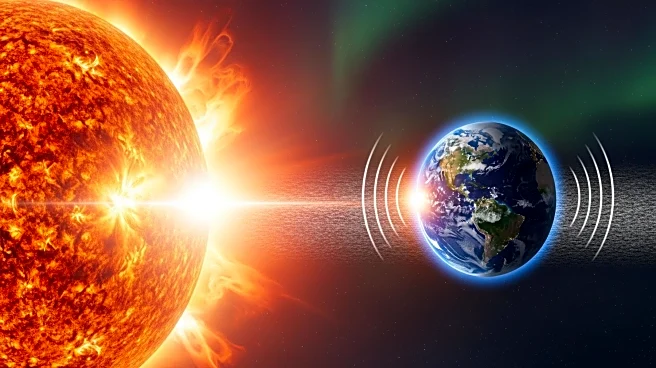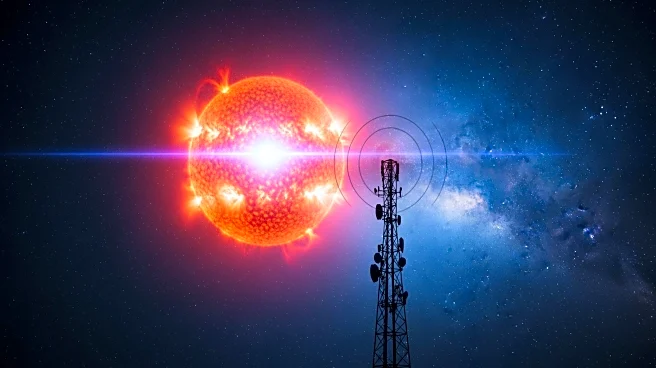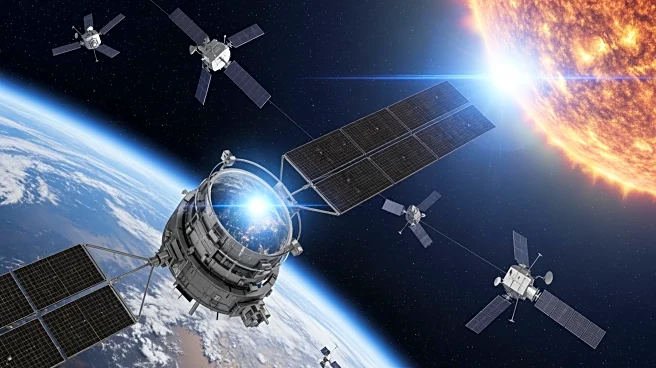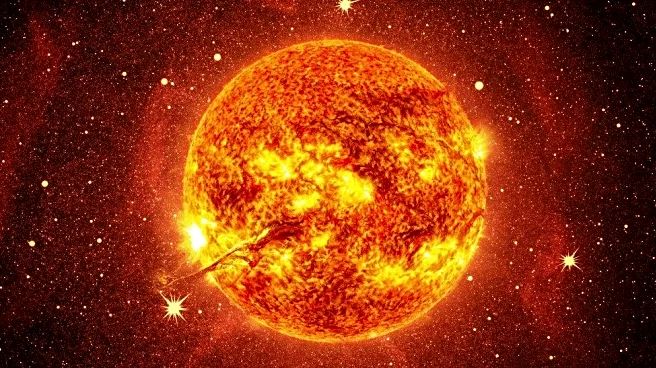What's Happening?
The sun has unleashed two X-class solar flares within 12 hours, causing radio blackouts across the sunlit portions of Earth, including North and South America, the North Pacific Ocean, New Zealand, and parts
of eastern Australia. The flares originated from sunspot AR4274 and were accompanied by coronal mass ejections. While these CMEs are not directly Earth-directed, their outer edges may interact with solar wind, potentially sparking geomagnetic storm conditions.
Why It's Important?
X-class solar flares are the most powerful category of solar eruptions, capable of disrupting high-frequency radio communications and navigation signals. These disruptions can affect aviation and maritime communications, highlighting the importance of monitoring solar activity. The potential geomagnetic storms could result in vibrant aurora displays, offering opportunities for aurora chasers.
What's Next?
Sunspot AR4274 remains active and is turning to face Earth, increasing the likelihood of Earth-directed eruptions. NOAA forecasts a 65% chance of additional M-class flares and a 15% chance of X-class flares in the coming days. Continuous monitoring and analysis will determine any Earth-directed threats and potential geomagnetic responses.












